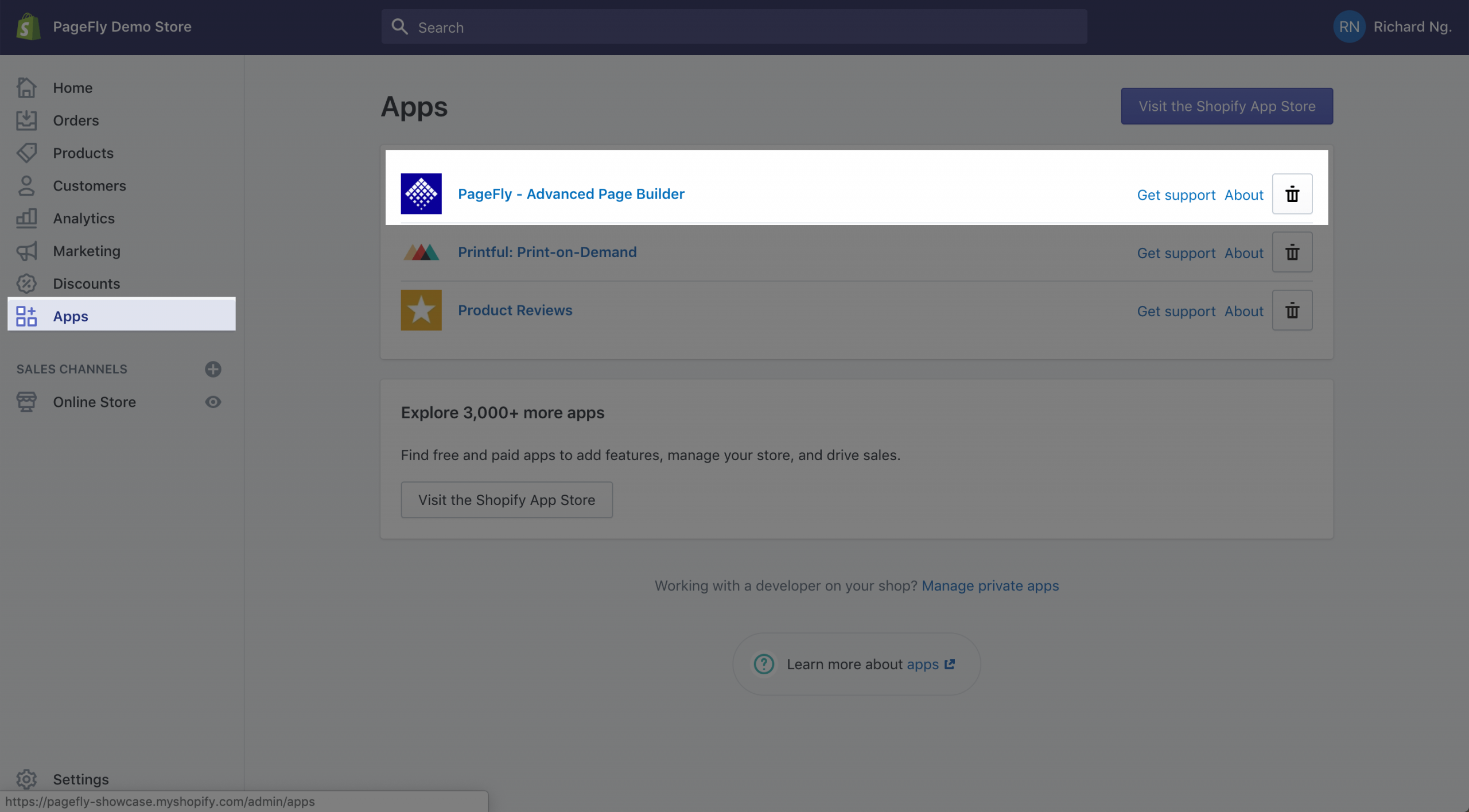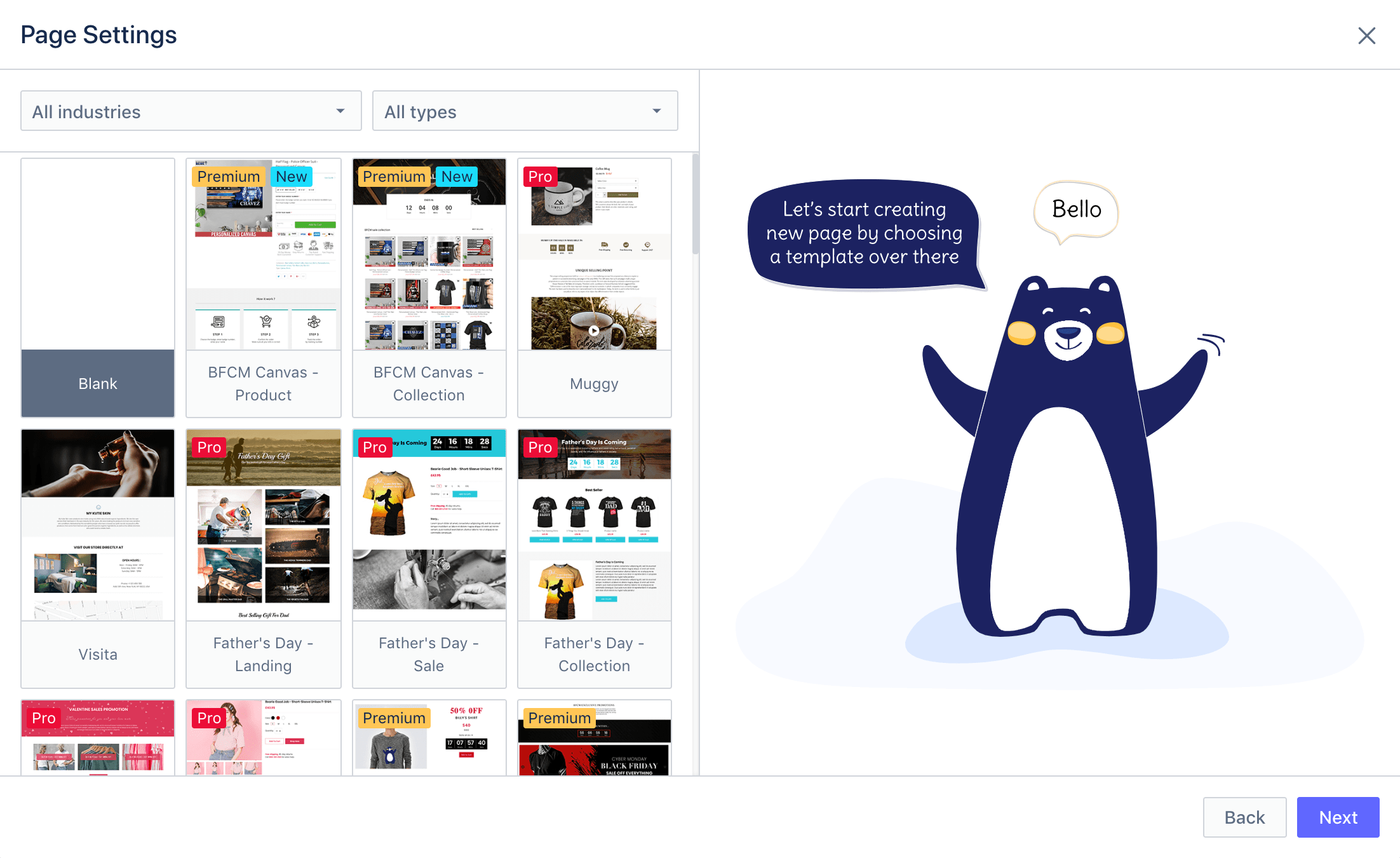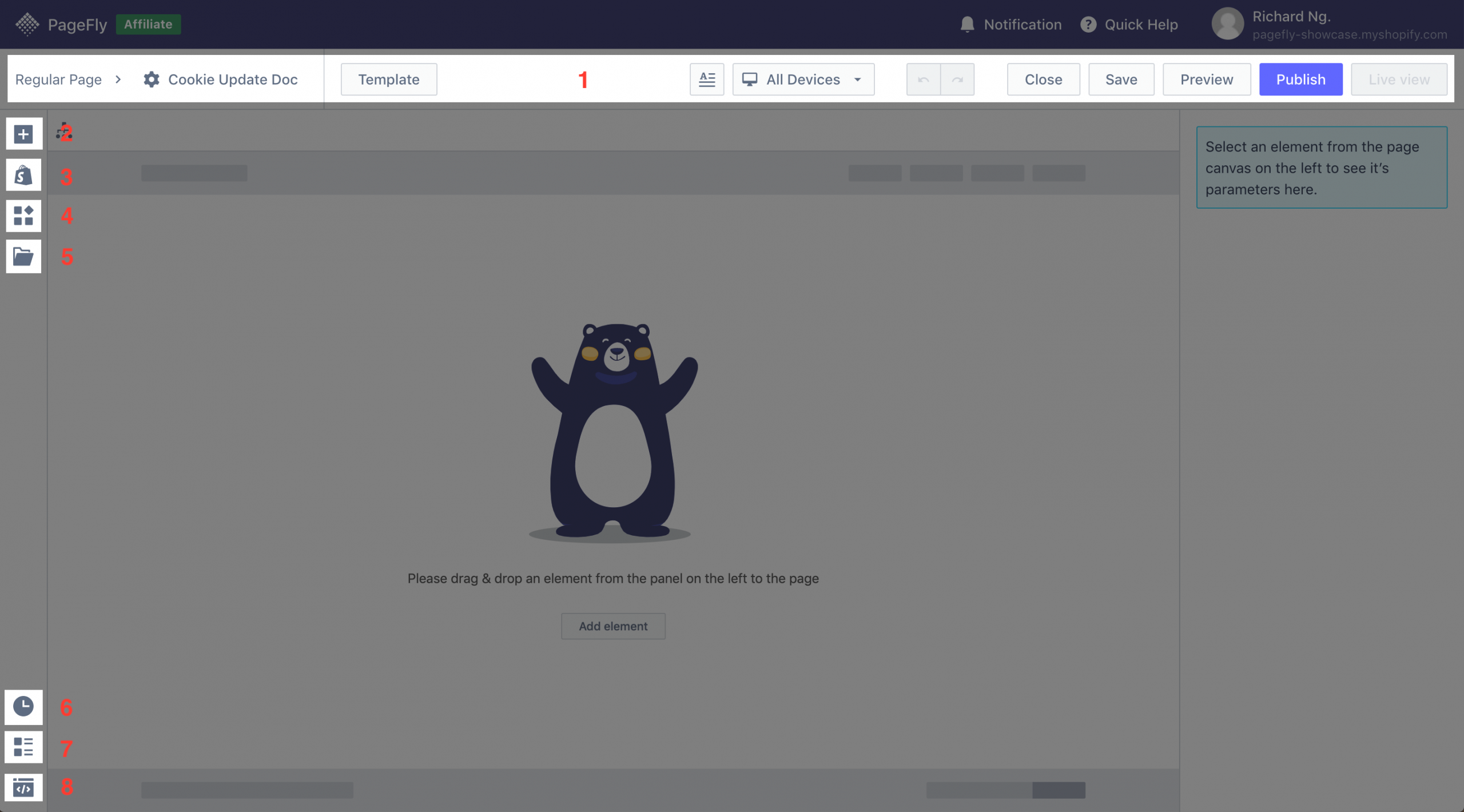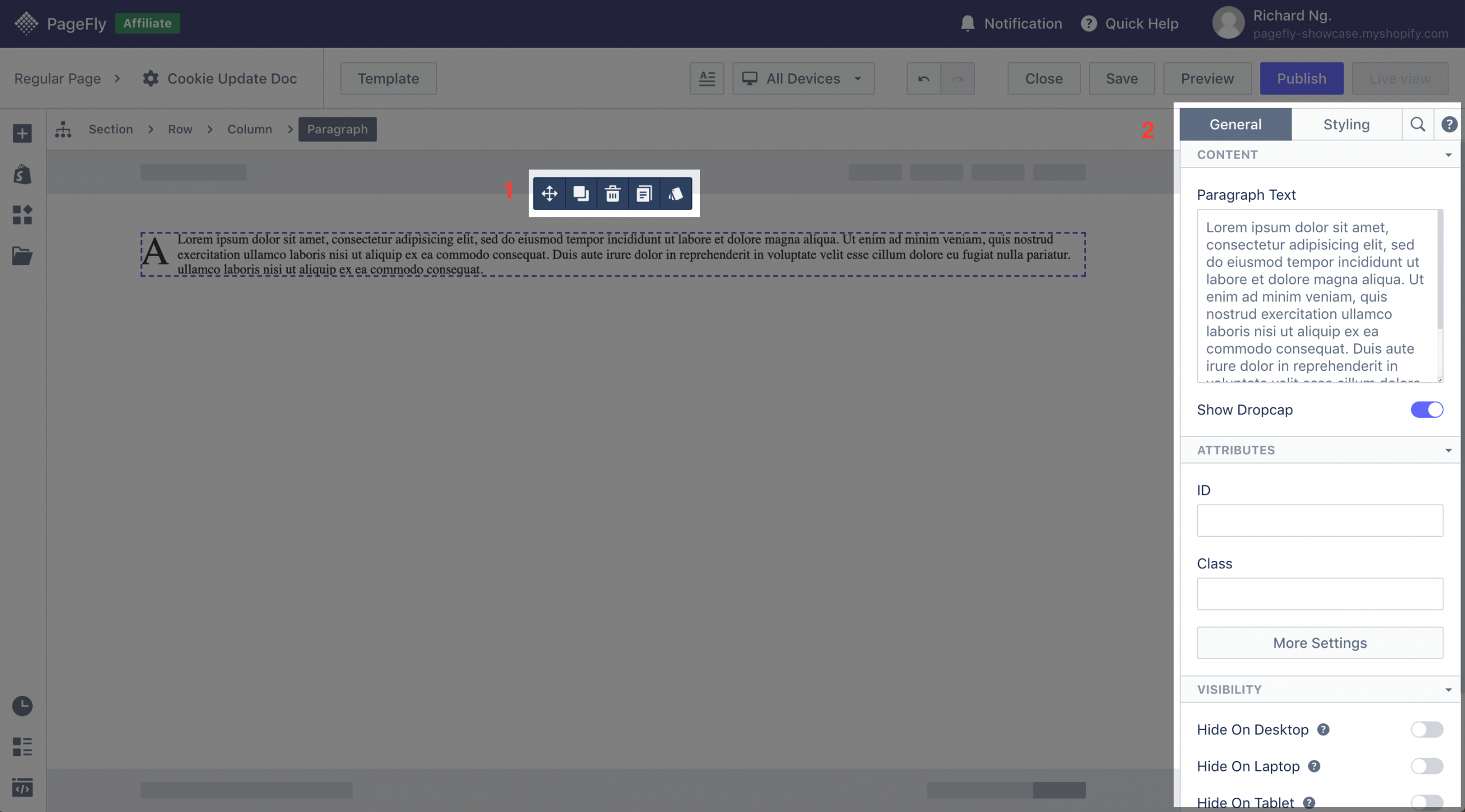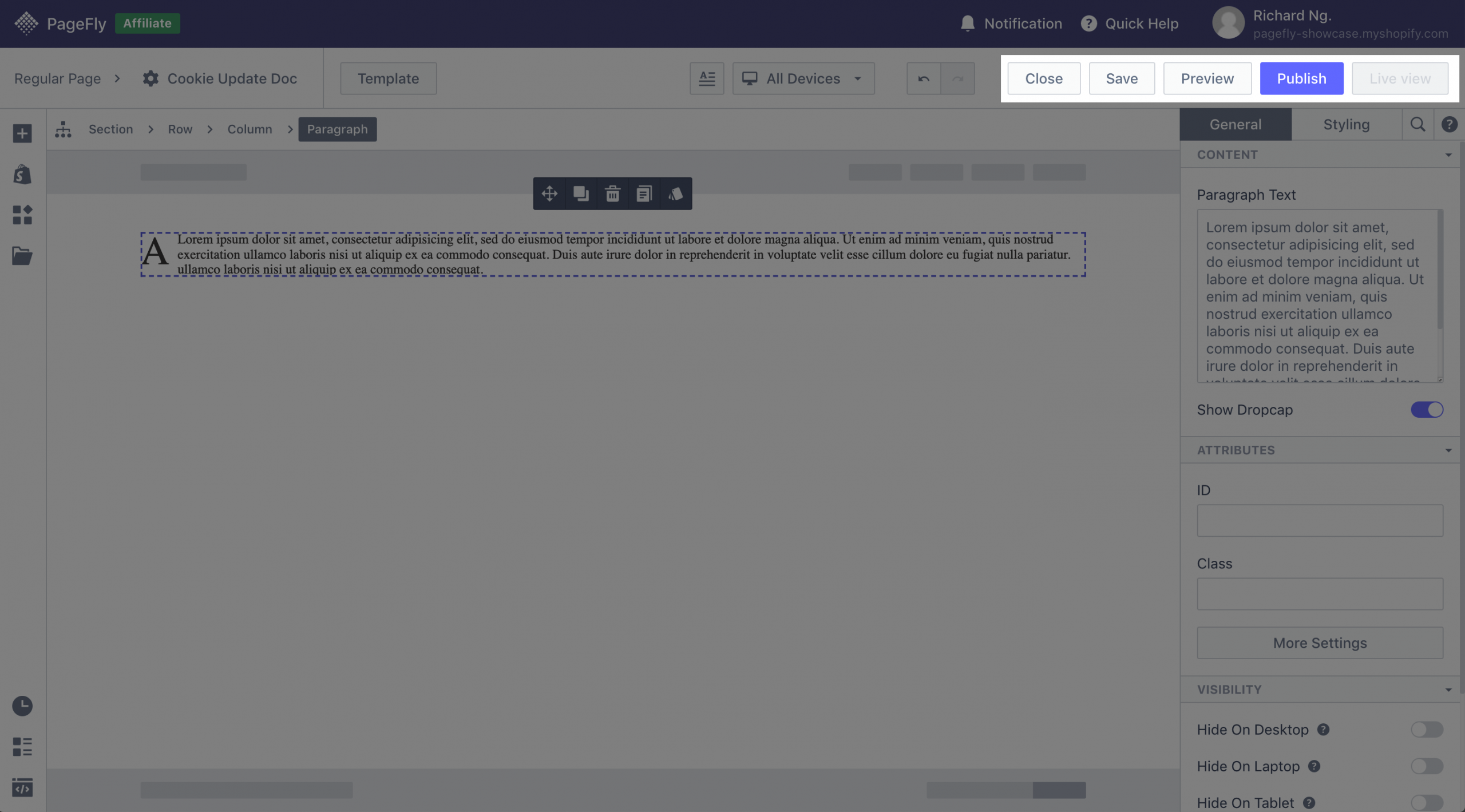How Can We Help?
Get started in 5 mins
This video will show you how to get started in 5 minutes with PageFly, let check it here
In this article, you will learn how to create a simple page with the key features and tools.
Step 1: Install the PageFly page builder
If you already installed the app, skip this step and move to the next one.
Visit the PageFly page on Shopify App Store, click the Add App button and fill in your store’s URL to install the app to your Shopify store. Simples.
Step 2: Create a new page
In the Shopify admin sidebar, click Apps > PageFly – Advanced Page Builder. After that, you will be redirected to the PageFly Dashboard on a different page.
Click Create a page or the (+) icon on the left menu. Then you can choose the page type as your preference in Page Settings.

You can start a new page in multiple ways. Simply choose its page type beforehand in the left side menu then create a new page. There are 6 types of pages listed:
Important: You can only have 1 page for each page type in Free plan. If you want to create more, take a look at our paid plans.
After your Page Settings configuration is done, you will be directed to a Template Library which lets you choose a template to start your store with.
If you are wondering about how to create a landing page with PageFly, you can watch the video below
Or you can use our template to build an awesome page:
Step 3: Getting to know the key features
Here are some features in the Page Editor to help you understand how PageFly works:
| 1. Top bar | See and set up general information on your page, including page type, page title, change Template, turn on Theme styling, change device layout, etc. |
| 2. Add element | Offers PageFly basic elements and sections. Drag and drop them to the blank page. |
| 3. Add Shopify element | Offers Shopify elements and sections. Step 4: Use PageFly elements |
| 4. Add third party elements | Offers third party app elements in 4 categories: Reviews & Rating; Badges & Seals; Subscriptions; Upload Fields. This feature is updated continuously. |
| 5. Add section | Offers stores saved section and premade sections that you can re-use in another part of the page or a different page. |
| 6. Version history | Shows auto-saved and published versions. This feature will only be activated once you publish the page. |
| 7. Show page outline | Displays the page outline inside the Editor. |
| 8. Add Custom Code | Adds your CSS and JavaScript code to the page. |
Step 4: Use PageFly elements
First, click Add Element > Element. Select the element and you can edit it with 2 tools:
- Element toolbar: Quickly take action on the element, including move; duplicate; delete; copy style; paste style.
- Element inspector: Edit the settings and stylings of the element with 2 tabs: General and Styling.
Step 5: Preview or publish the page
Once you’re done building the page, hit Save. This option saves the page to a database but does not make it public yet. You can see the page preview via Preview.
The Publish button both saves the page and makes it public. You can see the live page via Live View. The page will link to your store with the address “your-shop-name.myshopify.com/pages/page-name”.
You can check the PageFly page in the Shopify database by going to Shopify home > Sales Channels > Online Store > Pages.
If you are still wondering about how to have a beautiful and attractive page with PageFly, do not worry, this guide will surely help you and give you the knowledge and practical information for PageFly users about crafting a perfect e-commerce page.

